What is cable insulation resistance and its norms
 Insulation resistance is one of the most important parameters of cables and wires, because during operation, power and signal cables are always subject to various external influences. In addition, in addition to external influences, the influence of the cores inside the cable on each other, their electrical interaction, which inevitably leads to leaks, is constantly present. Adding factors that affect the quality of insulation here, we get a more complete picture.
Insulation resistance is one of the most important parameters of cables and wires, because during operation, power and signal cables are always subject to various external influences. In addition, in addition to external influences, the influence of the cores inside the cable on each other, their electrical interaction, which inevitably leads to leaks, is constantly present. Adding factors that affect the quality of insulation here, we get a more complete picture.
For these reasons, the cables are always protected by dielectric insulation, which include: rubber, pvc, paper, oil, etc. - depending on the purpose of the cable, on the operating voltage, on the type of current, etc. For example, underground distribution telephone lines are made with armored tape cable, and some telecommunication cables are enclosed in an aluminum sheath to protect against external current interference ...
How to disassemble an induction motor
 Where only electric motors are not used today. Home appliances and cottage equipment, machine tools, power tools, electric vehicles and high-precision devices - everywhere you can find a small or large electric motor in one or another node of a device. Some of the readers may need to disassemble the engine for repair or maintenance, it is likely that this will need to be done at home. So let's see how the disassembly is done correctly.
Where only electric motors are not used today. Home appliances and cottage equipment, machine tools, power tools, electric vehicles and high-precision devices - everywhere you can find a small or large electric motor in one or another node of a device. Some of the readers may need to disassemble the engine for repair or maintenance, it is likely that this will need to be done at home. So let's see how the disassembly is done correctly.
In everyday life, you can find electric motors of two main types: asynchronous and collector. Induction motors are more often used in ventilation equipment, in machines, in pumps. Etc. Collector can be found in drills, in grinders and in other power tools. Collector ones are usually high-speed, while asynchronous ones have approximately a fixed synchronous frequency ...
What is an ammeter, types, device and principle of operation
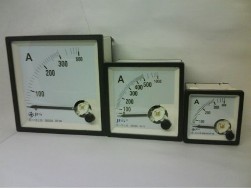 To determine the current value in an electric circuit, special devices are used - ammeters. The ammeter is connected in series to the circuit under study, and, due to the extremely small intrinsic resistance, this measuring device does not make any significant changes to the electrical parameters of the circuit.
To determine the current value in an electric circuit, special devices are used - ammeters. The ammeter is connected in series to the circuit under study, and, due to the extremely small intrinsic resistance, this measuring device does not make any significant changes to the electrical parameters of the circuit.
The instrument scale is graduated in amperes, kiloamperes, milliamperes, or microamperes. To extend the measurement range, the ammeter can be connected to the circuit through a transformer or parallel to the shunt, when only a small fraction of the measured current passes through the device, and the main circuit current flows through the shunt. Today, there are two particularly popular types of ammeters - mechanical ammeters - magnetoelectric and electrodynamic, and electronic - linear and transformer. In a classic magnetoelectric ammeter with an arrow ...
Galvanic cells - device, principle of operation, types and main characteristics
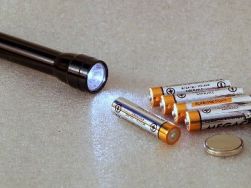 Prerequisites for the appearance of galvanic cells. A bit of history. In 1786, the Italian professor of medicine, physiologist Luigi Aloisio Galvani discovered an interesting phenomenon: the muscles of the hind legs of a freshly opened corpse of a frog suspended on copper hooks contracted when the scientist touched them with a steel scalpel. Galvani immediately concluded that this was a manifestation of "animal electricity."
Prerequisites for the appearance of galvanic cells. A bit of history. In 1786, the Italian professor of medicine, physiologist Luigi Aloisio Galvani discovered an interesting phenomenon: the muscles of the hind legs of a freshly opened corpse of a frog suspended on copper hooks contracted when the scientist touched them with a steel scalpel. Galvani immediately concluded that this was a manifestation of "animal electricity."
After the death of Galvani, his contemporary Alessandro Volta, as a chemist and physicist, will describe and publicly demonstrate a more realistic mechanism for the occurrence of electric current when different metals come into contact. Volta, after a series of experiments, will come to the unequivocal conclusion that the current appears in the circuit due to the presence in it of two conductors of different metals placed in a liquid, and this is not at all “animal electricity”, as Galvani thought. The twitching of the frog's legs was the result ...
The practical application of electrolysis
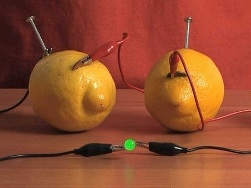 When an electric current passes through a solution or a melt of electrolyte, the solutes or other substances that are the products of secondary reactions on the electrodes are released on the electrodes.This physicochemical process is called electrolysis.
When an electric current passes through a solution or a melt of electrolyte, the solutes or other substances that are the products of secondary reactions on the electrodes are released on the electrodes.This physicochemical process is called electrolysis.
The essence of electrolysis is in the electric field created by the electrodes, the ions in the conducting fluid come in an orderly motion. The negative electrode is the cathode, the positive is the anode. Negative ions rush to the anode, called anions (hydroxyl group ions and acid residues), and positive ions rush to the cathode, called cations (hydrogen, metal, ammonium ions, etc.) An oxidation-reduction process takes place on the electrodes: the cathode electrochemical particle reduction. Dissociation reactions in an electrolyte are primary reactions, and reactions that occurdirectly on the electrodes ...
How the time-current characteristics of circuit breakers and fuses work
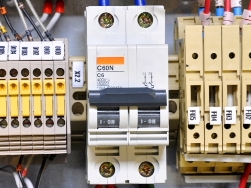 Electric current has one distinguishing feature: it is able to flow only in a closed loop. If this chain is broken, then its action immediately ceases. This property is embodied in the work of maximum current protection, based on the use of fuses and circuit breakers.
Electric current has one distinguishing feature: it is able to flow only in a closed loop. If this chain is broken, then its action immediately ceases. This property is embodied in the work of maximum current protection, based on the use of fuses and circuit breakers.
They are selected in such a way that they can withstand the nominal value of the current flowing through them for a long time. This ensures the reliability of power supply to consumers. At the same time, fuses and circuit breakers have protective functions: during emergency conditions in a controlled circuit, they break the dangerous current passing through them. At the same time, two factors are taken into account in the complex: the magnitude of the flowing load current, the duration of its impact. The fuse fuse blows out from the heat created by the current passing through it ...
Squirrel cage and phase rotor - what is the difference
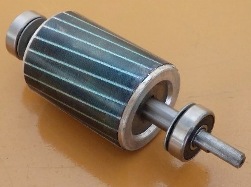 As you know, induction motors have a three-phase winding (three separate windings) of the stator, which can form a different number of pairs of magnetic poles depending on their design, which in turn affects the rated engine speed at the rated frequency of the supplying three-phase voltage. At the same time, the rotors of this type of motor may differ, and for asynchronous motors they are short-circuited or phase. What distinguishes a squirrel-cage rotor from a phase rotor - this will be discussed in this article.
As you know, induction motors have a three-phase winding (three separate windings) of the stator, which can form a different number of pairs of magnetic poles depending on their design, which in turn affects the rated engine speed at the rated frequency of the supplying three-phase voltage. At the same time, the rotors of this type of motor may differ, and for asynchronous motors they are short-circuited or phase. What distinguishes a squirrel-cage rotor from a phase rotor - this will be discussed in this article.
Ideas about the phenomenon of electromagnetic induction will tell us what will happen with a closed coil of a conductor placed in a rotating magnetic field, similar to the magnetic field of a stator of an induction motor. If such a coil is placed inside the stator, then when a current is supplied to the stator winding, EMF will be induced in the coil ...
Principles of electric motor for dummies
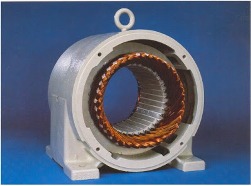 The basis of the electric motor, both direct current and alternating current, is based on Ampere force. If you do not smother how it turns out, then nothing will ever be incomprehensible. In fact, there is a vector product and differentials, but these are details, and we have a simplified, special case. The direction of the ampere force is determined by the rule of the left hand. Mentally put the left palm on the upper figure and get the direction of Ampere forces. She type stretch the frame with the current in that position as shown in the picture. And nothing will turn around here, the frame is in balance, stable.
The basis of the electric motor, both direct current and alternating current, is based on Ampere force. If you do not smother how it turns out, then nothing will ever be incomprehensible. In fact, there is a vector product and differentials, but these are details, and we have a simplified, special case. The direction of the ampere force is determined by the rule of the left hand. Mentally put the left palm on the upper figure and get the direction of Ampere forces. She type stretch the frame with the current in that position as shown in the picture. And nothing will turn around here, the frame is in balance, stable.
And if the frame with the current is rotated differently. There is no equilibrium here already, the Ampere force unfolds the opposite walls so that the frame begins to rotate. Mechanical rotation appears. This is the basis of the electric motor, the very essence, then only the details. What will the frame do ...
